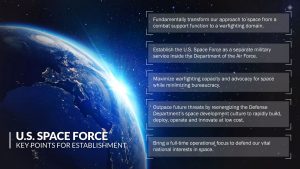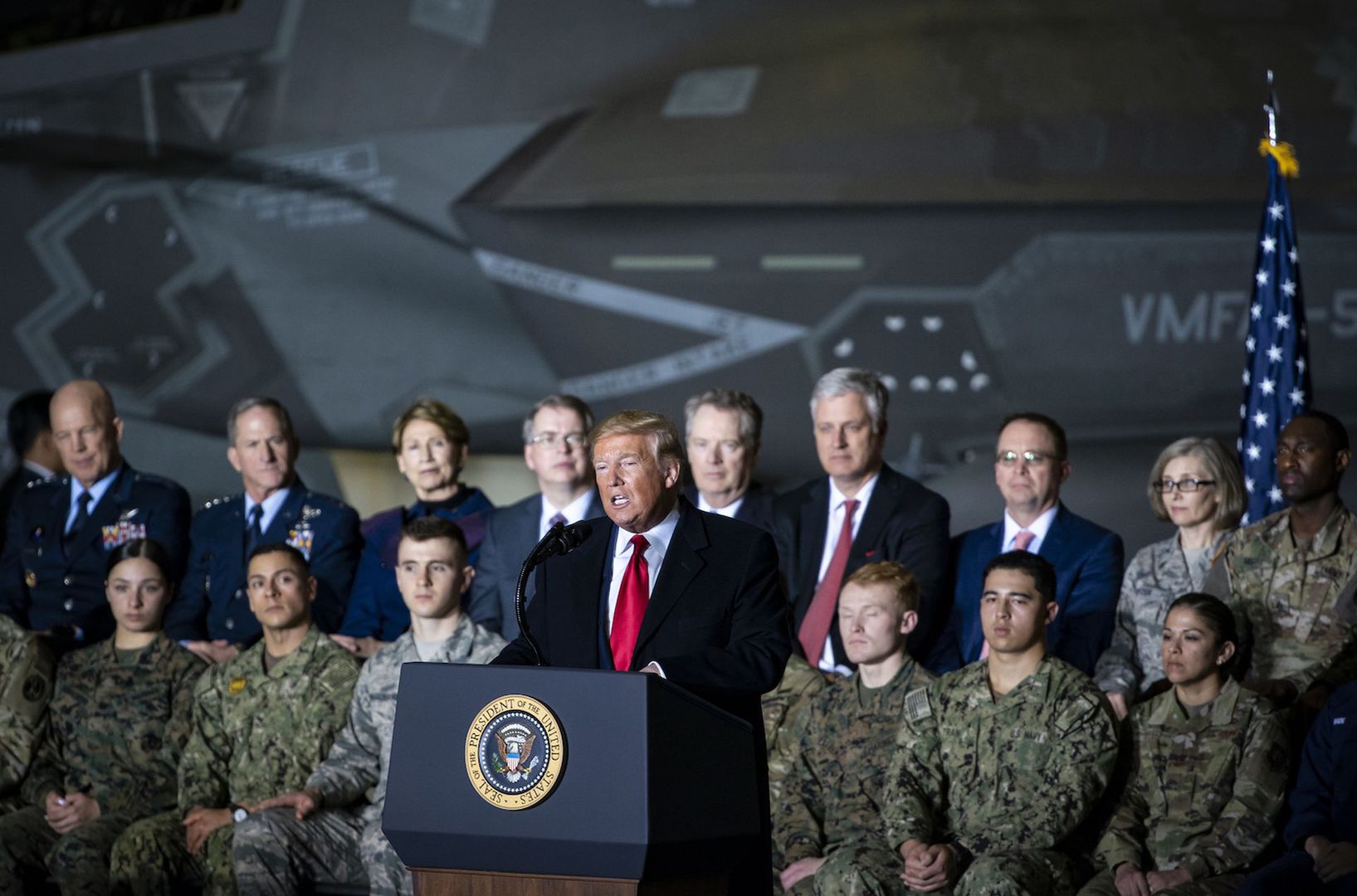The United States met a mounting 21st-century strategic challenge from Russia and China on Friday with the creation of a full-fledged U.S. Space Force within the Department of Defense.
Acting on an ambition by President Donald Trump that had met resistance at first, the White House signaled its determination to not cede superiority in a Star Wars-like future of killer satellites and satellite-killer weapons.
Trump made the space force’s creation real with the signing of the 2020 National Defense Authorization Act, which set the initial budget for a Pentagon force that will stand equally with the military’s five other branches.
“Going to be a lot of things happening in space, because space is the world’s newest war-fighting domain,” Trump told members of the military gathered for the signing.
The U.S. Space Force will be the sixth formal force of the U.S. military, after the U.S. Army, Air Force, Navy, Marines and Coast Guard.
“Our reliance on space-based capabilities has grown dramatically, and today outer space has evolved into a war-fighting domain of its own,” said Secretary of Defense Mark Esper. “Maintaining American dominance in that domain is now the mission of the United States Space Force.”
Esper compared the space force’s creation to the landmark creation of a separate U.S. Air Force in 1947, hived off from the army after World War II in recognition that aerial war fighting was indeed a separate domain that would be important in the future.

Now that recognition is extended to space, a crucial venue for both military spy and communications satellites that could be targeted by adversaries in a conflict, and the possibility of orbiting launch platforms for destructive weapons.
The Defense Intelligence Agency warned in a report early this year that China and Russia have both developed “robust and capable” space services for intelligence, surveillance and reconnaissance.
“China and Russia, in particular, are developing a variety of means to exploit perceived U.S. reliance on space-based systems and challenge the U.S. position in space,” it said.
China had already demonstrated it could shoot down a satellite with a ground-based missile in 2007.
“Both states are developing jamming and cyberspace capabilities, directed energy weapons, on-orbit capabilities, and ground-based anti-satellite missiles that can achieve a range of reversible to nonreversible effects,” it said.
Iran and North Korea, too, are increasingly able to extend their military activities into space, jamming the communications of adversaries and developing ballistic missile technologies, it noted.
China and Russia have the perception “that space represents an (American) Achilles’ heel and that this is an asymmetric advantage for them to then take on the United States’ power,” Steve Kitay, deputy assistant secretary of defense for space policy, said in August. “Space will not be an Achilles’ heel” for the U.S.
The new organization builds on the U.S. Space Command already operating under the air force following its creation in August.
Like the marines, which operate within the umbrella of the navy, the space force will continue to be under the air force.
Space Command will continue on, focused on war fighting — much like the Pentagon’s regional commands like CentCom — while the space force will encompass broader missions like training, procurement, long-term planning and other functions.
The space force will be comprised of about 16,000 air force and civilian personnel, some already taking part in the Space Command, according to Air Force Secretary Barbara Barrett.
It will have its own uniform, shoulder patches and, eventually, its own song.
“The U.S. Space Force will protect America’s national interests by its singular focus on space. The United States has the best space acumen in the world,” Barrett said.
“It’s a different sort of portfolio than what we might be thinking of when we generally think about war-fighting machines,” she said.
Leading the space force will be air force Gen. Jay Raymond, who currently runs SpaceCom.
“With the establishment of the United States Space Force, we’re elevating space commensurate with its importance to our national security and the security of our allies and our partners,” Raymond said.










